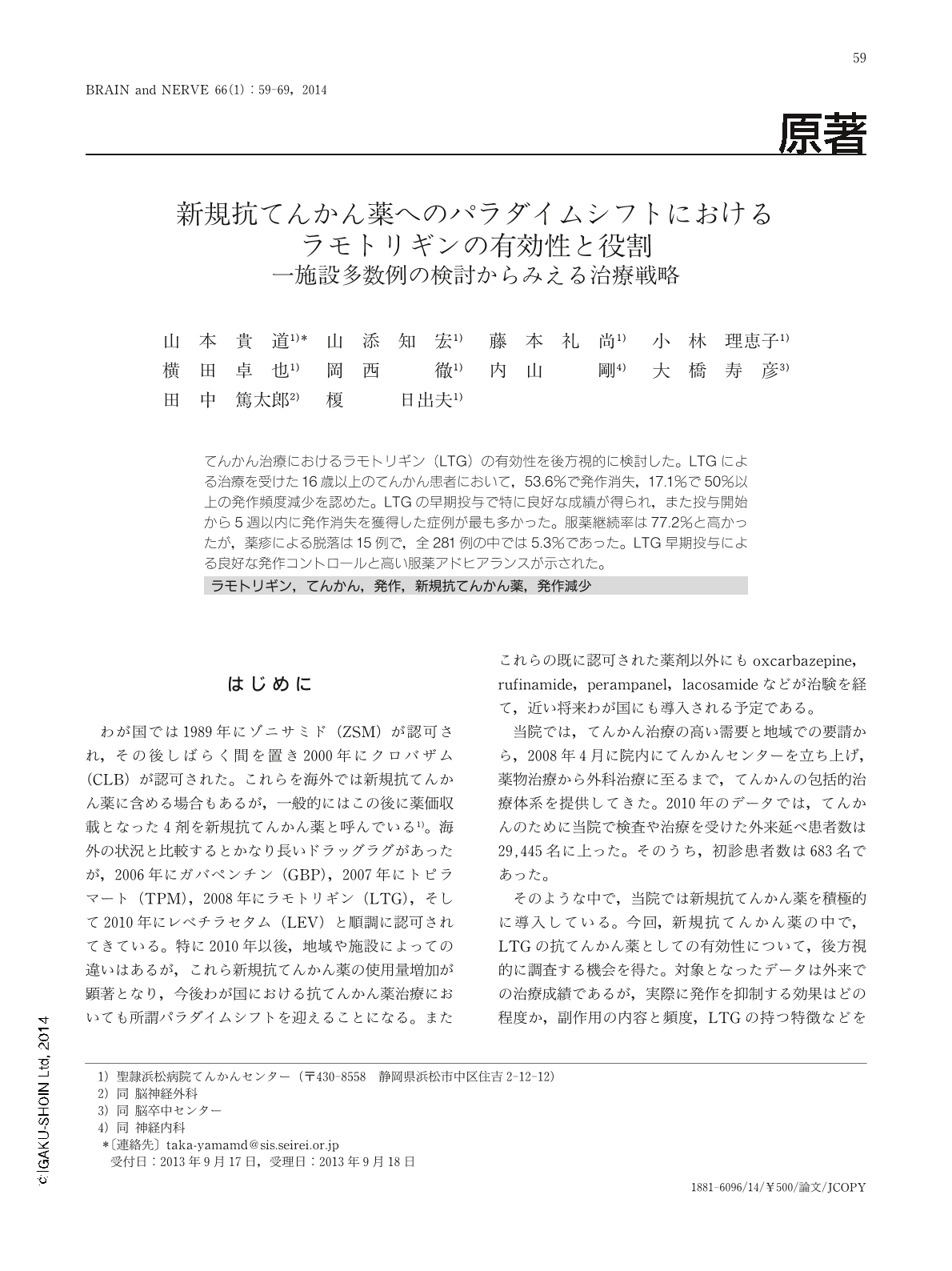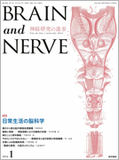Japanese
English
- 有料閲覧
- Abstract 文献概要
- 1ページ目 Look Inside
- 参考文献 Reference
てんかん治療におけるラモトリギン(LTG)の有効性を後方視的に検討した。LTGによる治療を受けた16歳以上のてんかん患者において,53.6%で発作消失,17.1%で50%以上の発作頻度減少を認めた。LTGの早期投与で特に良好な成績が得られ,また投与開始から5週以内に発作消失を獲得した症例が最も多かった。服薬継続率は77.2%と高かったが,薬疹による脱落は15例で,全281例の中では5.3%であった。LTG早期投与による良好な発作コントロールと高い服薬アドヒアランスが示された。
Abstract
Lamotrigine (LTG) has been recognized as one of the best newer antiepileptic drugs (AEDs) used in developed countries since 1991. A retrospective study was carried out to evaluate the efficacy, adverse reactions, and other peculiarities of LTG. Two hundred and eighty-one patients with epilepsy, aged 16 or more, were treated with LTG between December 2008 and December 2012 at the Seirei Hamamatsu General Hospital. One hundred and forty patients were found to be eligible to evaluate the effectiveness of LTG. Of them, 100 patients had localized epilepsy, and 40 patients had generalized epilepsy. Seventy-five out of these 140 (53.6%) patients obtained seizure freedom following LTG use, and 24 patients (17.1%) showed more than 50% seizure reduction, which indicates that a total of 99 patients (70.7%) were good responders. A seizure reduction of less than 50% was seen in 8 patients (5.7%), whereas 30 patients (21.4%) did not display any obvious seizure reduction. Three patients (2.1%) showed a worsening of seizure frequency. Patients with idiopathic generalized epilepsy such as juvenile myoclonic epilepsy showed satisfactory results. Many good responders were also patients with stroke or brain tumor.
The number of concomitant AEDs used demonstrated a more distinctive feature. Monotherapy without any other AEDs was used in 20 patients. LTG was used as an add-on with 1 concomitant AED in 59 patients (42.1%) and as an add-on with 2 concomitant AEDs in 37 patients (26.4%). Thus, a large number of patients (68.6%) underwent early add-on treatment. LTG as an add-on in concert with concomitant AEDs contributed to the excellent results in terms of seizure reduction observed in this study.
LTG administration requires established titration, particularly to prevent drug eruption. Over 60% of the patients were treated by slower titration than that used in the established titration method. However, seizure freedom was accomplished within 1-5 weeks from the beginning of LTG treatment with doses much lower than 200 mg/day, which indicated the effectiveness of low-dose LTG in the early phase of treatment. The average maintenance dose was 162.7 mg/day; however, half of the patients maintained their dose at more than 200 mg/day. The continuation rate was 77.2%. The main reasons for withdrawal were dissatisfaction with drug effectiveness and drug eruption. However, the incidence of drug eruption was only in 15 out of 281 (5.3%) patients, which is similar to previously reported rates.
Therefore, LTG is an effective and safe AED. Moreover, it is a promising drug for promoting a paradigm shift towards newer AEDs. LTG administration as a first add-on AED is strongly recommended to obtain excellent results and to maintain good compliance with the epilepsy treatment course.
(Received September 17, 2013; Accepted September 18, 2013; Published January 1, 2014)

Copyright © 2014, Igaku-Shoin Ltd. All rights reserved.


